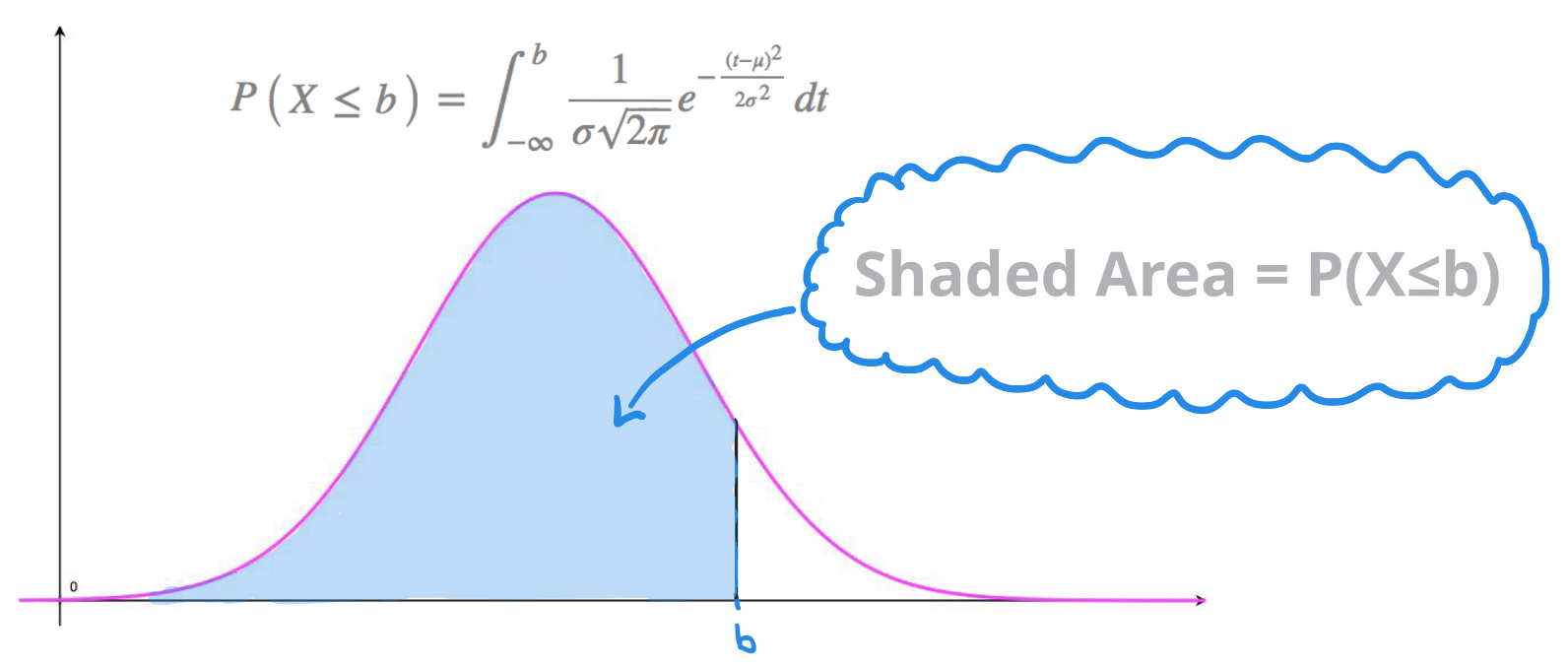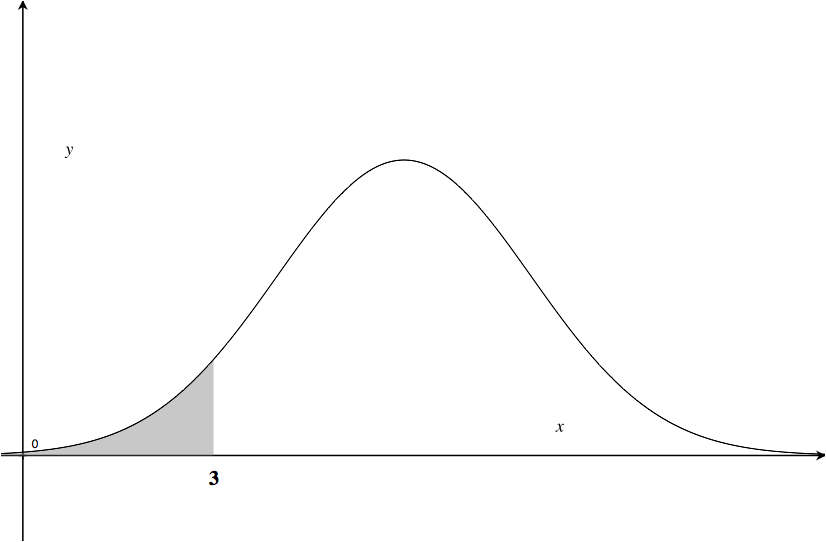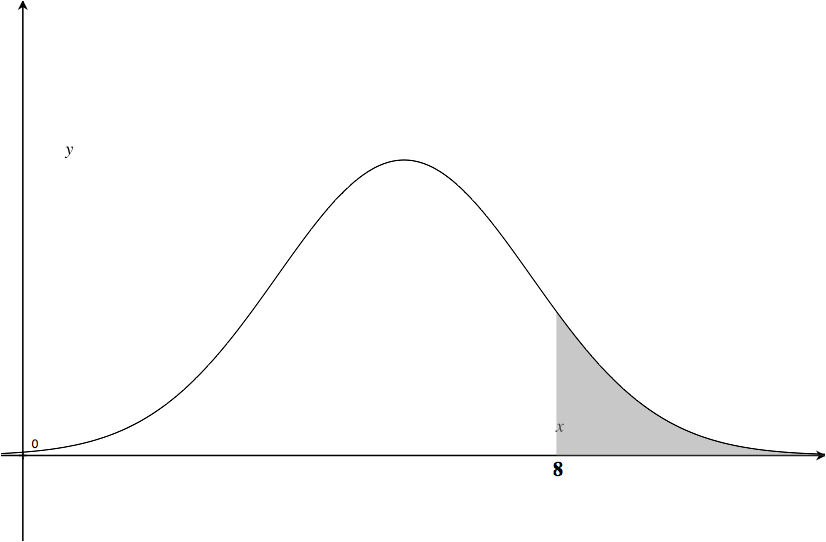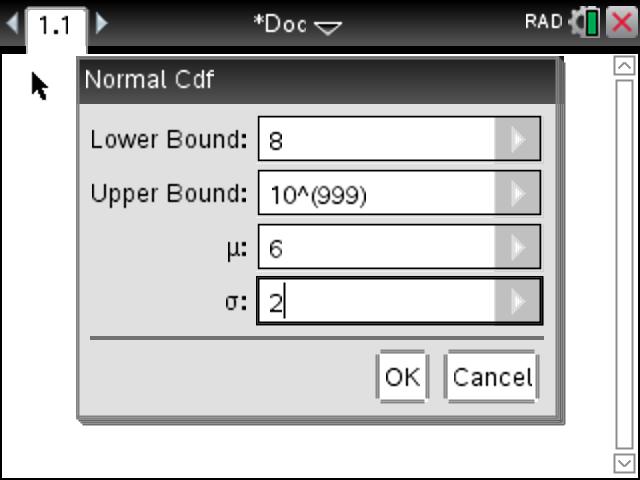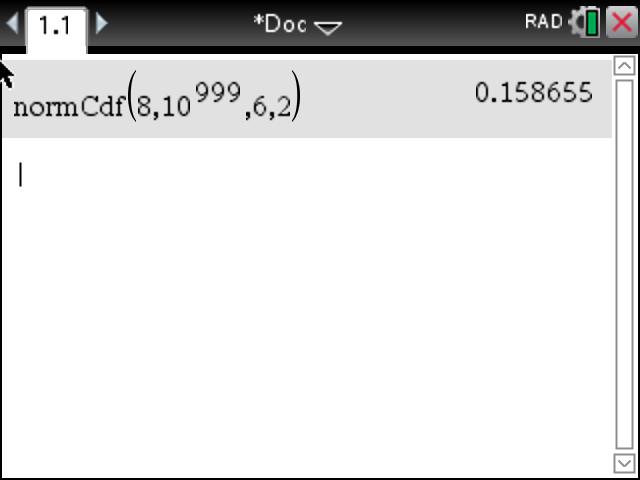Normal Distributions
Normal distributions are used to model variables that are evenly spread on either side of their mean values.
The further a value is from the mean: the less likely that value is to occur.
The curve of a normal probability density function appears to be bell-shaped. These curves are often referred to as bell curves.
Bell curves are symmetrical on either side of the mean value \(x=\mu\) so that \(50\%\) of the area enclosed by the curve and the horizontal axis lies on either side of the vertical line of symmetry \(x=\mu\).
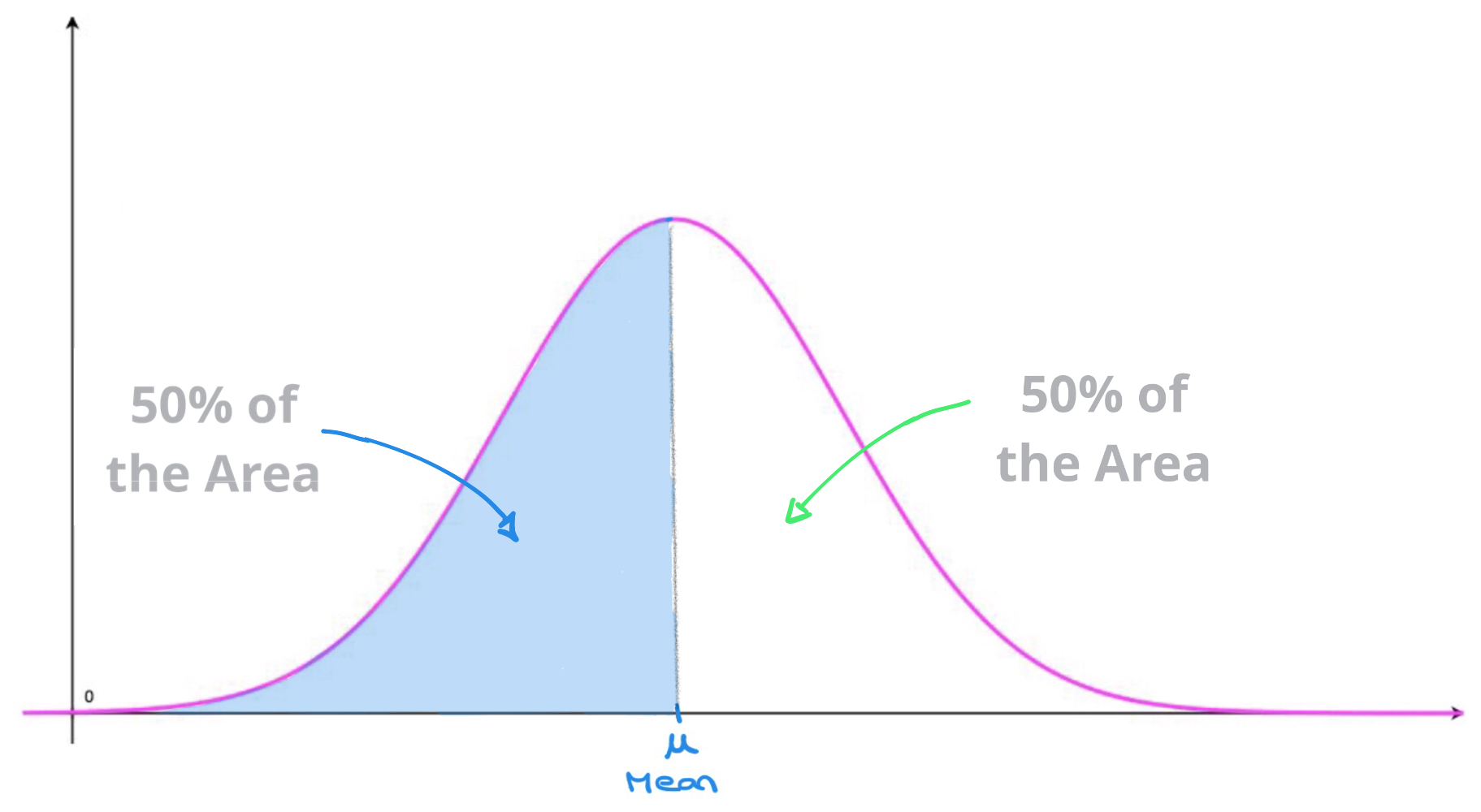
An example could be the distribution of the heights in cm of the entire male population of a country. There would be a mean height (say 175cm) and all heights in the population would be evenly distributed on either side of this mean, with a standard deviation of a few cm.
Another example could be the time it takes for each gender to run \(100\)m. There would be a mean value and all other values would be evenly spread on either side of that mean.
To say that a continuous random variable, \(X\), follows a normal distribution with mean \(\mu \) and variance \(\sigma^2\) we write: \[X \sim N\begin{pmatrix} \mu , \ \sigma^2 \end{pmatrix}\] Remember: \(\text{Variance}=\sigma^2\), where \(\sigma \) is the standard deviation.
